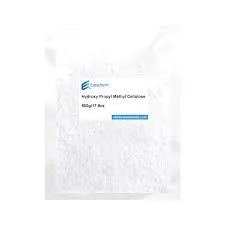
Nov . 08, 2024 15:03 Back to list
hpmc formulation
HPMC Formulation An Overview of Hydroxypropyl Methylcellulose in Pharmaceutical Applications
Hydroxypropyl Methylcellulose (HPMC) is a versatile polymer widely used in the pharmaceutical industry due to its excellent biocompatibility and unique rheological properties. This semi-synthetic cellulose derivative is created by chemically modifying cellulose to enhance its solubility and functionality in various applications. In this article, we will explore the characteristics of HPMC, its formulation processes, and its applications in pharmaceuticals.
Characteristics of HPMC
HPMC is a white to off-white powder that is odorless and tasteless. It is soluble in water but remains insoluble in organic solvents, making it an ideal choice for various pharmaceutical formulations. The degree of substitution (DS) of HPMC influences its properties significantly. Typically, the DS ranges from 0.2 to 2.0, affecting solubility, viscosity, and gel-forming ability. HPMC has a unique feature as temperatures rise, its viscosity changes, leading to different applications in thermally controlled processes.
One of the most significant advantages of HPMC is its ability to form reliable gels or films, which can be beneficial in designing sustained-release formulations. As an excipient, it enhances the stability and bioavailability of active pharmaceutical ingredients (APIs).
Formulation Processes Involving HPMC
In pharmaceutical formulation, HPMC can be employed in various ways, such as binders, film formers, and thickening agents. The choice of HPMC grade and concentration can significantly influence the performance of the final dosage form.
1. Tablets HPMC is widely used in the formulation of both immediate-release and controlled-release tablets. In immediate-release tablets, HPMC serves as a binder to facilitate granulation and improve tablet hardness. For controlled-release formulations, HPMC helps regulate the drug release rate by creating a gel layer around the tablet upon contact with gastrointestinal fluids.
2. Capsules HPMC is also utilized in the production of vegetarian capsules, offering an alternative to traditional gelatin capsules. These capsules dissolve easily and are suitable for a wide range of APIs.
hpmc formulation

3. Suspensions and Emulsions In liquid formulations, HPMC acts as a suspending agent or stabilizer, preventing sedimentation of the dispersed phase. This property is pivotal in ensuring uniformity and stability in suspensions and emulsions.
4. Topical Formulations HPMC is commonly used in creams and gels due to its thickening properties. It provides a desirable texture, enhancing the usability and sensory profile of topical products.
5. Ophthalmic Formulations HPMC’s biocompatibility makes it suitable for ophthalmic applications, where it is used as a lubricant and thickening agent in eye drops.
Applications in Pharmaceuticals
HPMC plays a crucial role in enhancing the efficacy and delivery of pharmaceuticals. Its versatility allows it to adapt to various formulation needs, making it invaluable in drug development. For instance, in sustained-release formulations, HPMC can modulate the release profiles of drugs, allowing for a more controlled therapeutic effect and reducing the frequency of dosing.
Furthermore, the growing trend towards vegetarian and vegan products has increased the demand for HPMC-based formulations, especially in capsule manufacturing. As consumers become more health-conscious and environmentally aware, formulators continue to explore HPMC's potential in various innovative applications.
Conclusion
The formulation of pharmaceuticals has greatly benefited from the incorporation of Hydroxypropyl Methylcellulose. Its unique properties, along with its adaptability to different dosage forms, make HPMC an essential excipient in modern drug development. As the pharmaceutical industry continues to evolve, the role of HPMC is likely to expand, paving the way for new therapeutic innovations and improved patient outcomes. The ongoing research into HPMC's capabilities indicates a promising future for this remarkable polymer in the realm of pharmaceuticals.
-
Versatile Hpmc Uses in Different Industries
NewsJun.19,2025
-
Redispersible Powder's Role in Enhancing Durability of Construction Products
NewsJun.19,2025
-
Hydroxyethyl Cellulose Applications Driving Green Industrial Processes
NewsJun.19,2025
-
Exploring Different Redispersible Polymer Powder
NewsJun.19,2025
-
Choosing the Right Mortar Bonding Agent
NewsJun.19,2025
-
Applications and Significance of China Hpmc in Modern Industries
NewsJun.19,2025







